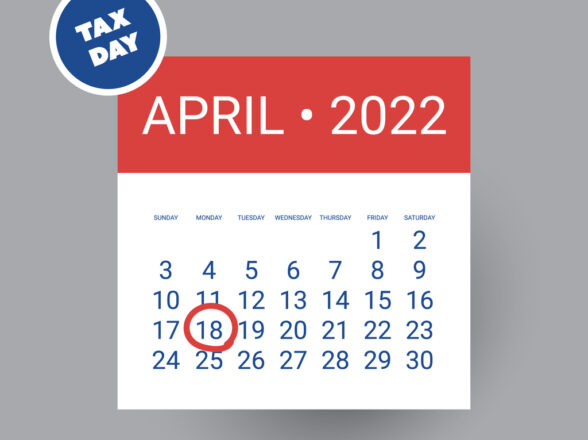Blog
It’s time to move your Financial Planning to the FRONT burner

When the markets are all moving up, and some exploding higher, the average investor can tend to put financial planning on the back burner. It’s human nature; when there’s no pain, we continue on with life and prefer to let sleeping dogs lie.
However, there is a real danger with getting complacent with your personal financial planning matters. When times get tough, and then markets move against you – be that stocks, real estate, rare coins, etc. – will you have the knowledge and discipline to not make a big mistake? Sadly, few investors – even very successful ones – can achieve their goals without having a rock-solid game plan for both the good times and the bad.
Increasingly, Americans are getting answers to finding success from professional financial advisors. According to a recent survey from the Board of Certified Financial Planners, the number of Americans using the services of financial advisors increased from 28% in 2010 to 40% in 2015. A majority of those who worked with a financial advisor reported they believed that person was a Certified Financial Planner™. In some cases, that assessment was correct; in other cases, they were mistaken.
Let’s take a few moments to dig into the weeds, and really get a sense for what financial planning is all about, and who you should trust to help you through the process:
One: What Is Financial Planning?
Professional financial planning is more than simply checking the size of your pension fund or providing advice about ways to save money. As defined by the CFP® Board, financial planning encompasses a specific set of steps and subject areas:“The Standards of Professional Conduct…define financial planning as ‘the process of determining whether and how an individual can meet life goals through the proper management of financial resources. Financial planning integrates the financial planning process with the financial planning subject areas.’”
Two: What Are the Primary Goals of Financial Planning?
Financial planning has 3 principal objectives:
- To establish realistic goals: you can’t create a smart plan until you decide what your goals are. Depending on your individual circumstances, those goals could include saving for retirement, paying for a child’s college education, or providing financial security for your heirs in the event of your death.
- To analyze cash flow: meeting your goals necessitates increasing your assets; that means analyzing how much you make and spend each month, and identifying areas where you can reduce that spending.
- To identify sound investment strategies: what constitutes a “sound investment” is different for different people. For example, if you have little or no experience with financial markets, buying and selling stocks is probably not a sound investment. You might be wiser to choose a more conservative approach, like investing in low-cost index funds.
Three: How Does the Financial Planning Process Work?
The financial planning process a CFP® uses is both comprehensive and specific. It consists of 6 principal steps:
- Establishing the nature of your relationship with the CFP®;
- Collecting relevant financial data;
- Evaluating your current financial situation;
- Developing sound recommendations for action;
- Strategically implementing those recommendations; and
- Periodically monitoring recommendations and progress
Four: On What Financial Areas Does a CFP® Consult and Advise?
A CFP® will consider everything that will impact your current and future finances. The areas they look at include (but are not limited to):
- Retirement planning;
- Estate planning;
- Insurance planning;
- Investment planning;
- Employee benefits planning; and
- Cash flow analysis and budgeting
Five: Is Every Financial Advisor a Certified Financial Planner™?
The answer is “no,” and it’s an important distinction. According to Business Insider:
Financial advisor’ is a broad term that is generally used to refer to most any professional advising you on your finances, up to and including Certified Financial Planners™. Certified Financial Planners™, on the other hand, have to be certified by the Certified Financial Planner Board of Standards, Inc., which is why you’ll often see a registered mark after their designation (CFP®).
The educational requirements to become a CFP® are rigorous. Equally important, unlike people who simply call themselves “financial planners,” a CFP have a special fiduciary responsibility: specifically, they are required to work in their clients’ best interest.
Six: What Type of Training Do Certified Financial Planners™ Have?
Almost anyone can call himself or herself a “financial advisor;” there are, however, strict and rigorous requirements to become a Certified Financial Planner™. Specifically, to obtain the CFP® credential, one must:
- Have a minimum 3 years of relevant professional experience: this could include work in insurance, banking, financial planning, accounting or real estate.
- Have a bachelor’s degree or higher: although one is not required to hold a bachelor’s degree at the time he takes the CFP® Certification Examination, he must obtain one within 5 years of the date he passes that test.
- Complete specified coursework: in addition to having the bachelor’s degree, a CFP® must complete 5 additional courses at an approved school in areas such as tax planning, estate planning, investment planning, insurance planning and retirement planning
- Pass the CFP® Board Exam: this is an extremely rigorous, 10-hour exam conducted over 2 days and covering 106 different financial planning topics. The test includes 285 multiple-choice questions, some of which involve reading and responding to case studies covering hypothetical financial planning scenarios.
Seven: Who Are Certified Financial Planners™?
According to a recent survey, there are almost 80,000 Certified Financial Planners™ in the United States. The 5 states with the largest number of CFP® certificants are California, Texas, Florida, New York and Pennsylvania. 77% of CFP® certificants and male; 23% are female. More than half are between the ages of 40 and 59. At the time they passed the certification examination, 63% held a bachelor’s degree, 28% had a master’s degree, 1% had a doctorate, 3% had a juris doctor degree, and 1% had an associate’s degree.
Eight: How Can One Find a Reliable CFP®?
If you already have the name and address of a financial planner, go to the CFP® Board Web Form and enter the planner’s basic information to verify his or her certification and background. If you need to find a CFP®in your area, go to the “Find a Financial Planner” webpage and enter your city and state. When you meet with the CFP®, ask good questions about the extent of their experience, their qualifications, the services they offer, and whether they’ve worked with clients whose financial circumstances are similar to your own.
The Future of Financial Planning
The economy is continually changing, as is the financial planning industry that responds to it and the regulations which govern their activities. Last year, for example, the U.S. Department of Labor created a new fiduciary rule (popularly known simply as ‘the DOL Rule’) which requires financial planners to offer lower-cost products for their clients’ retirement accounts, and for brokers to actually act as fiduciaries (imagine that!) Under the anti-regulation push by the Trump administration, the DOL has recently proposed a nearly two-year delay in its implementation to July, 2019, but there is little doubt, the playing field is changing.
In addition, financial planners are increasingly integrating new software (like aggregation tools, portfolio management tools, CRM, portfolio analytics tools and communications tools such as video conferencing) into their work to better serve their client’s needs.
The bottom line is that effectively planning for your financial future is no longer a do-it-yourself project. The complexities and challenges of life leave little room for error, and a lot of room to find a partner who can guide you through the exercise of financial planning in a meaningful and effective way.




















































































